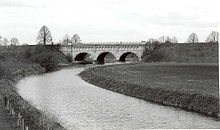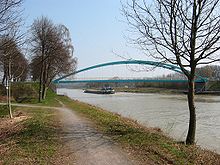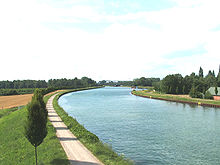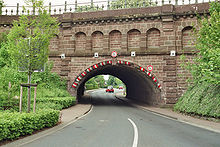Dortmund-Ems Canal
| Dortmund-Ems Canal | |||||||||||||||||||||||||||||||||||||||||||||||||||||||||||||||||||||||||||||||||||||||||||||||||||||||||||||||||||||||||||||||||||||||||||||||||||||||||||||||||||||||||||||||||||||||||||||||||||||||||||||||||||||||||||||||||||||||||||||||||||||||||||||||||||||||||||||||||||||||||||||||||||||||||||||||||||||||||||||||||||||||||||||||||||||||||||||||||||||||||||||||||||||||||||||||||||||||||||||||||||||||||||||||||||||||||||||||||||||||||||||||||||||||||||||||||||||||||||||||||||||||||||||||||||||||||||||||||||||||||||||||||||||||||||||||||||||||||||||||||||||||||||||||||||||||||||||||||||||||||||||||||||||||||||||||||||||||||||||||||||||||||||||||||||||||||||||||||||||||||||||||||||||||||||||||||||||||||||||||||||||||||||||||||||||||||||||||||||||||||||||||||||||||||||||||||||||||||||||||||||||||||||||||||||||||||||||||||||||||||||||||||||||||||||||||||||||||||||||||||||||||||||||||||||||||||||||||||||||||||||||||||||||||||||||||||||||||||||||||||||||||||||||||||||||||||||||||||||||||
|---|---|---|---|---|---|---|---|---|---|---|---|---|---|---|---|---|---|---|---|---|---|---|---|---|---|---|---|---|---|---|---|---|---|---|---|---|---|---|---|---|---|---|---|---|---|---|---|---|---|---|---|---|---|---|---|---|---|---|---|---|---|---|---|---|---|---|---|---|---|---|---|---|---|---|---|---|---|---|---|---|---|---|---|---|---|---|---|---|---|---|---|---|---|---|---|---|---|---|---|---|---|---|---|---|---|---|---|---|---|---|---|---|---|---|---|---|---|---|---|---|---|---|---|---|---|---|---|---|---|---|---|---|---|---|---|---|---|---|---|---|---|---|---|---|---|---|---|---|---|---|---|---|---|---|---|---|---|---|---|---|---|---|---|---|---|---|---|---|---|---|---|---|---|---|---|---|---|---|---|---|---|---|---|---|---|---|---|---|---|---|---|---|---|---|---|---|---|---|---|---|---|---|---|---|---|---|---|---|---|---|---|---|---|---|---|---|---|---|---|---|---|---|---|---|---|---|---|---|---|---|---|---|---|---|---|---|---|---|---|---|---|---|---|---|---|---|---|---|---|---|---|---|---|---|---|---|---|---|---|---|---|---|---|---|---|---|---|---|---|---|---|---|---|---|---|---|---|---|---|---|---|---|---|---|---|---|---|---|---|---|---|---|---|---|---|---|---|---|---|---|---|---|---|---|---|---|---|---|---|---|---|---|---|---|---|---|---|---|---|---|---|---|---|---|---|---|---|---|---|---|---|---|---|---|---|---|---|---|---|---|---|---|---|---|---|---|---|---|---|---|---|---|---|---|---|---|---|---|---|---|---|---|---|---|---|---|---|---|---|---|---|---|---|---|---|---|---|---|---|---|---|---|---|---|---|---|---|---|---|---|---|---|---|---|---|---|---|---|---|---|---|---|---|---|---|---|---|---|---|---|---|---|---|---|---|---|---|---|---|---|---|---|---|---|---|---|---|---|---|---|---|---|---|---|---|---|---|---|---|---|---|---|---|---|---|---|---|---|---|---|---|---|---|---|---|---|---|---|---|---|---|---|---|---|---|---|---|---|---|---|---|---|---|---|---|---|---|---|---|---|---|---|---|---|---|---|---|---|---|---|---|---|---|---|---|---|---|---|---|---|---|---|---|---|---|---|---|---|---|---|---|---|---|---|---|---|---|---|---|---|---|---|---|---|---|---|---|---|---|---|---|---|---|---|---|---|---|---|---|---|---|---|---|---|---|---|---|---|---|---|---|---|---|---|---|---|---|---|---|---|---|---|---|---|---|---|---|---|---|---|---|---|---|---|---|---|---|---|---|---|---|---|---|---|---|---|---|---|---|---|---|---|---|---|---|---|---|---|---|---|---|---|---|---|---|---|---|---|---|---|---|---|---|---|---|---|---|---|---|---|---|---|---|---|---|---|---|---|---|---|---|---|---|---|---|---|---|---|---|---|---|---|---|---|---|---|---|---|---|---|---|---|---|---|---|---|---|---|---|---|---|---|---|---|---|---|---|---|---|---|---|---|---|---|---|---|---|---|---|---|---|---|---|---|---|---|---|---|---|---|---|---|---|---|---|---|---|---|---|---|---|---|---|---|---|---|---|---|---|---|---|---|---|---|---|---|---|---|---|---|---|---|---|---|---|---|---|---|---|---|---|---|---|---|---|---|---|---|---|---|---|---|---|---|---|---|---|---|---|---|---|---|---|---|---|---|---|---|---|---|---|---|---|---|---|---|---|---|---|---|---|---|---|---|---|---|---|---|---|---|---|---|---|---|---|---|---|---|---|---|---|---|---|---|---|---|---|---|---|---|---|---|---|---|---|---|---|---|---|---|---|---|---|---|---|---|---|---|---|---|---|---|---|---|---|---|---|---|---|---|---|---|---|---|---|---|---|---|---|---|---|---|---|---|---|---|---|---|---|---|---|---|---|---|---|---|---|---|---|---|---|---|---|---|---|---|---|---|---|---|---|---|---|---|---|---|---|---|---|---|---|---|---|---|---|---|---|---|---|---|---|---|---|---|---|---|---|---|---|---|---|---|---|---|---|---|---|---|---|---|---|---|---|---|---|---|---|---|---|---|---|---|---|---|---|---|---|---|---|---|---|---|---|---|---|---|---|---|---|---|---|---|---|---|---|---|---|---|---|---|---|---|---|---|---|---|---|---|---|---|---|---|---|---|---|---|---|---|---|---|---|---|---|---|---|---|---|---|---|---|---|---|---|---|---|---|---|---|---|---|---|---|---|---|---|---|---|---|---|
|
Overview map of the canal |
|||||||||||||||||||||||||||||||||||||||||||||||||||||||||||||||||||||||||||||||||||||||||||||||||||||||||||||||||||||||||||||||||||||||||||||||||||||||||||||||||||||||||||||||||||||||||||||||||||||||||||||||||||||||||||||||||||||||||||||||||||||||||||||||||||||||||||||||||||||||||||||||||||||||||||||||||||||||||||||||||||||||||||||||||||||||||||||||||||||||||||||||||||||||||||||||||||||||||||||||||||||||||||||||||||||||||||||||||||||||||||||||||||||||||||||||||||||||||||||||||||||||||||||||||||||||||||||||||||||||||||||||||||||||||||||||||||||||||||||||||||||||||||||||||||||||||||||||||||||||||||||||||||||||||||||||||||||||||||||||||||||||||||||||||||||||||||||||||||||||||||||||||||||||||||||||||||||||||||||||||||||||||||||||||||||||||||||||||||||||||||||||||||||||||||||||||||||||||||||||||||||||||||||||||||||||||||||||||||||||||||||||||||||||||||||||||||||||||||||||||||||||||||||||||||||||||||||||||||||||||||||||||||||||||||||||||||||||||||||||||||||||||||||||||||||||||||||||||||||||
| Water code | DE : 70501 | ||||||||||||||||||||||||||||||||||||||||||||||||||||||||||||||||||||||||||||||||||||||||||||||||||||||||||||||||||||||||||||||||||||||||||||||||||||||||||||||||||||||||||||||||||||||||||||||||||||||||||||||||||||||||||||||||||||||||||||||||||||||||||||||||||||||||||||||||||||||||||||||||||||||||||||||||||||||||||||||||||||||||||||||||||||||||||||||||||||||||||||||||||||||||||||||||||||||||||||||||||||||||||||||||||||||||||||||||||||||||||||||||||||||||||||||||||||||||||||||||||||||||||||||||||||||||||||||||||||||||||||||||||||||||||||||||||||||||||||||||||||||||||||||||||||||||||||||||||||||||||||||||||||||||||||||||||||||||||||||||||||||||||||||||||||||||||||||||||||||||||||||||||||||||||||||||||||||||||||||||||||||||||||||||||||||||||||||||||||||||||||||||||||||||||||||||||||||||||||||||||||||||||||||||||||||||||||||||||||||||||||||||||||||||||||||||||||||||||||||||||||||||||||||||||||||||||||||||||||||||||||||||||||||||||||||||||||||||||||||||||||||||||||||||||||||||||||||||||||||
| abbreviation | DEK | ||||||||||||||||||||||||||||||||||||||||||||||||||||||||||||||||||||||||||||||||||||||||||||||||||||||||||||||||||||||||||||||||||||||||||||||||||||||||||||||||||||||||||||||||||||||||||||||||||||||||||||||||||||||||||||||||||||||||||||||||||||||||||||||||||||||||||||||||||||||||||||||||||||||||||||||||||||||||||||||||||||||||||||||||||||||||||||||||||||||||||||||||||||||||||||||||||||||||||||||||||||||||||||||||||||||||||||||||||||||||||||||||||||||||||||||||||||||||||||||||||||||||||||||||||||||||||||||||||||||||||||||||||||||||||||||||||||||||||||||||||||||||||||||||||||||||||||||||||||||||||||||||||||||||||||||||||||||||||||||||||||||||||||||||||||||||||||||||||||||||||||||||||||||||||||||||||||||||||||||||||||||||||||||||||||||||||||||||||||||||||||||||||||||||||||||||||||||||||||||||||||||||||||||||||||||||||||||||||||||||||||||||||||||||||||||||||||||||||||||||||||||||||||||||||||||||||||||||||||||||||||||||||||||||||||||||||||||||||||||||||||||||||||||||||||||||||||||||||||||
| location | Germany: North Rhine-Westphalia , Lower Saxony | ||||||||||||||||||||||||||||||||||||||||||||||||||||||||||||||||||||||||||||||||||||||||||||||||||||||||||||||||||||||||||||||||||||||||||||||||||||||||||||||||||||||||||||||||||||||||||||||||||||||||||||||||||||||||||||||||||||||||||||||||||||||||||||||||||||||||||||||||||||||||||||||||||||||||||||||||||||||||||||||||||||||||||||||||||||||||||||||||||||||||||||||||||||||||||||||||||||||||||||||||||||||||||||||||||||||||||||||||||||||||||||||||||||||||||||||||||||||||||||||||||||||||||||||||||||||||||||||||||||||||||||||||||||||||||||||||||||||||||||||||||||||||||||||||||||||||||||||||||||||||||||||||||||||||||||||||||||||||||||||||||||||||||||||||||||||||||||||||||||||||||||||||||||||||||||||||||||||||||||||||||||||||||||||||||||||||||||||||||||||||||||||||||||||||||||||||||||||||||||||||||||||||||||||||||||||||||||||||||||||||||||||||||||||||||||||||||||||||||||||||||||||||||||||||||||||||||||||||||||||||||||||||||||||||||||||||||||||||||||||||||||||||||||||||||||||||||||||||||||||
| length | 223.45 km | ||||||||||||||||||||||||||||||||||||||||||||||||||||||||||||||||||||||||||||||||||||||||||||||||||||||||||||||||||||||||||||||||||||||||||||||||||||||||||||||||||||||||||||||||||||||||||||||||||||||||||||||||||||||||||||||||||||||||||||||||||||||||||||||||||||||||||||||||||||||||||||||||||||||||||||||||||||||||||||||||||||||||||||||||||||||||||||||||||||||||||||||||||||||||||||||||||||||||||||||||||||||||||||||||||||||||||||||||||||||||||||||||||||||||||||||||||||||||||||||||||||||||||||||||||||||||||||||||||||||||||||||||||||||||||||||||||||||||||||||||||||||||||||||||||||||||||||||||||||||||||||||||||||||||||||||||||||||||||||||||||||||||||||||||||||||||||||||||||||||||||||||||||||||||||||||||||||||||||||||||||||||||||||||||||||||||||||||||||||||||||||||||||||||||||||||||||||||||||||||||||||||||||||||||||||||||||||||||||||||||||||||||||||||||||||||||||||||||||||||||||||||||||||||||||||||||||||||||||||||||||||||||||||||||||||||||||||||||||||||||||||||||||||||||||||||||||||||||||||||
| Built | 1892-1899 | ||||||||||||||||||||||||||||||||||||||||||||||||||||||||||||||||||||||||||||||||||||||||||||||||||||||||||||||||||||||||||||||||||||||||||||||||||||||||||||||||||||||||||||||||||||||||||||||||||||||||||||||||||||||||||||||||||||||||||||||||||||||||||||||||||||||||||||||||||||||||||||||||||||||||||||||||||||||||||||||||||||||||||||||||||||||||||||||||||||||||||||||||||||||||||||||||||||||||||||||||||||||||||||||||||||||||||||||||||||||||||||||||||||||||||||||||||||||||||||||||||||||||||||||||||||||||||||||||||||||||||||||||||||||||||||||||||||||||||||||||||||||||||||||||||||||||||||||||||||||||||||||||||||||||||||||||||||||||||||||||||||||||||||||||||||||||||||||||||||||||||||||||||||||||||||||||||||||||||||||||||||||||||||||||||||||||||||||||||||||||||||||||||||||||||||||||||||||||||||||||||||||||||||||||||||||||||||||||||||||||||||||||||||||||||||||||||||||||||||||||||||||||||||||||||||||||||||||||||||||||||||||||||||||||||||||||||||||||||||||||||||||||||||||||||||||||||||||||||||||
| class | Vb (km 1.44–21.33), IV (km 21.33–225.82) |
||||||||||||||||||||||||||||||||||||||||||||||||||||||||||||||||||||||||||||||||||||||||||||||||||||||||||||||||||||||||||||||||||||||||||||||||||||||||||||||||||||||||||||||||||||||||||||||||||||||||||||||||||||||||||||||||||||||||||||||||||||||||||||||||||||||||||||||||||||||||||||||||||||||||||||||||||||||||||||||||||||||||||||||||||||||||||||||||||||||||||||||||||||||||||||||||||||||||||||||||||||||||||||||||||||||||||||||||||||||||||||||||||||||||||||||||||||||||||||||||||||||||||||||||||||||||||||||||||||||||||||||||||||||||||||||||||||||||||||||||||||||||||||||||||||||||||||||||||||||||||||||||||||||||||||||||||||||||||||||||||||||||||||||||||||||||||||||||||||||||||||||||||||||||||||||||||||||||||||||||||||||||||||||||||||||||||||||||||||||||||||||||||||||||||||||||||||||||||||||||||||||||||||||||||||||||||||||||||||||||||||||||||||||||||||||||||||||||||||||||||||||||||||||||||||||||||||||||||||||||||||||||||||||||||||||||||||||||||||||||||||||||||||||||||||||||||||||||||||||
| Beginning | Port of Dortmund | ||||||||||||||||||||||||||||||||||||||||||||||||||||||||||||||||||||||||||||||||||||||||||||||||||||||||||||||||||||||||||||||||||||||||||||||||||||||||||||||||||||||||||||||||||||||||||||||||||||||||||||||||||||||||||||||||||||||||||||||||||||||||||||||||||||||||||||||||||||||||||||||||||||||||||||||||||||||||||||||||||||||||||||||||||||||||||||||||||||||||||||||||||||||||||||||||||||||||||||||||||||||||||||||||||||||||||||||||||||||||||||||||||||||||||||||||||||||||||||||||||||||||||||||||||||||||||||||||||||||||||||||||||||||||||||||||||||||||||||||||||||||||||||||||||||||||||||||||||||||||||||||||||||||||||||||||||||||||||||||||||||||||||||||||||||||||||||||||||||||||||||||||||||||||||||||||||||||||||||||||||||||||||||||||||||||||||||||||||||||||||||||||||||||||||||||||||||||||||||||||||||||||||||||||||||||||||||||||||||||||||||||||||||||||||||||||||||||||||||||||||||||||||||||||||||||||||||||||||||||||||||||||||||||||||||||||||||||||||||||||||||||||||||||||||||||||||||||||||||||
| The End | Tideems near Papenburg | ||||||||||||||||||||||||||||||||||||||||||||||||||||||||||||||||||||||||||||||||||||||||||||||||||||||||||||||||||||||||||||||||||||||||||||||||||||||||||||||||||||||||||||||||||||||||||||||||||||||||||||||||||||||||||||||||||||||||||||||||||||||||||||||||||||||||||||||||||||||||||||||||||||||||||||||||||||||||||||||||||||||||||||||||||||||||||||||||||||||||||||||||||||||||||||||||||||||||||||||||||||||||||||||||||||||||||||||||||||||||||||||||||||||||||||||||||||||||||||||||||||||||||||||||||||||||||||||||||||||||||||||||||||||||||||||||||||||||||||||||||||||||||||||||||||||||||||||||||||||||||||||||||||||||||||||||||||||||||||||||||||||||||||||||||||||||||||||||||||||||||||||||||||||||||||||||||||||||||||||||||||||||||||||||||||||||||||||||||||||||||||||||||||||||||||||||||||||||||||||||||||||||||||||||||||||||||||||||||||||||||||||||||||||||||||||||||||||||||||||||||||||||||||||||||||||||||||||||||||||||||||||||||||||||||||||||||||||||||||||||||||||||||||||||||||||||||||||||||||||
| Descent structures | Henrichenburg , Münster , Bevergern , Rodde , Altenrheine , Venhaus , Hesselte , Gleesen , Hanekenfähr , Varloh , Meppen , Hüntel , Hilter , Düthe , Bollingerfähr , Herbrum | ||||||||||||||||||||||||||||||||||||||||||||||||||||||||||||||||||||||||||||||||||||||||||||||||||||||||||||||||||||||||||||||||||||||||||||||||||||||||||||||||||||||||||||||||||||||||||||||||||||||||||||||||||||||||||||||||||||||||||||||||||||||||||||||||||||||||||||||||||||||||||||||||||||||||||||||||||||||||||||||||||||||||||||||||||||||||||||||||||||||||||||||||||||||||||||||||||||||||||||||||||||||||||||||||||||||||||||||||||||||||||||||||||||||||||||||||||||||||||||||||||||||||||||||||||||||||||||||||||||||||||||||||||||||||||||||||||||||||||||||||||||||||||||||||||||||||||||||||||||||||||||||||||||||||||||||||||||||||||||||||||||||||||||||||||||||||||||||||||||||||||||||||||||||||||||||||||||||||||||||||||||||||||||||||||||||||||||||||||||||||||||||||||||||||||||||||||||||||||||||||||||||||||||||||||||||||||||||||||||||||||||||||||||||||||||||||||||||||||||||||||||||||||||||||||||||||||||||||||||||||||||||||||||||||||||||||||||||||||||||||||||||||||||||||||||||||||||||||||||||
| Ports | Dortmund , Groppenbruch, Lüdinghausen RaiLog, Münster Agravis , Heribert Büscher, Gelmer, Schmedehausen, Ladbergen, Dörenthe, Rheine, Spelle-Venhaus , Lingen-Darme, Holthausen, Emsland , Haren, Lathen, Fresenburg | ||||||||||||||||||||||||||||||||||||||||||||||||||||||||||||||||||||||||||||||||||||||||||||||||||||||||||||||||||||||||||||||||||||||||||||||||||||||||||||||||||||||||||||||||||||||||||||||||||||||||||||||||||||||||||||||||||||||||||||||||||||||||||||||||||||||||||||||||||||||||||||||||||||||||||||||||||||||||||||||||||||||||||||||||||||||||||||||||||||||||||||||||||||||||||||||||||||||||||||||||||||||||||||||||||||||||||||||||||||||||||||||||||||||||||||||||||||||||||||||||||||||||||||||||||||||||||||||||||||||||||||||||||||||||||||||||||||||||||||||||||||||||||||||||||||||||||||||||||||||||||||||||||||||||||||||||||||||||||||||||||||||||||||||||||||||||||||||||||||||||||||||||||||||||||||||||||||||||||||||||||||||||||||||||||||||||||||||||||||||||||||||||||||||||||||||||||||||||||||||||||||||||||||||||||||||||||||||||||||||||||||||||||||||||||||||||||||||||||||||||||||||||||||||||||||||||||||||||||||||||||||||||||||||||||||||||||||||||||||||||||||||||||||||||||||||||||||||||||||||
| Junctions, crossings | Rhine-Herne Canal , Datteln-Hamm Canal , Wesel-Datteln Canal , Mittelland Canal , coastal canal | ||||||||||||||||||||||||||||||||||||||||||||||||||||||||||||||||||||||||||||||||||||||||||||||||||||||||||||||||||||||||||||||||||||||||||||||||||||||||||||||||||||||||||||||||||||||||||||||||||||||||||||||||||||||||||||||||||||||||||||||||||||||||||||||||||||||||||||||||||||||||||||||||||||||||||||||||||||||||||||||||||||||||||||||||||||||||||||||||||||||||||||||||||||||||||||||||||||||||||||||||||||||||||||||||||||||||||||||||||||||||||||||||||||||||||||||||||||||||||||||||||||||||||||||||||||||||||||||||||||||||||||||||||||||||||||||||||||||||||||||||||||||||||||||||||||||||||||||||||||||||||||||||||||||||||||||||||||||||||||||||||||||||||||||||||||||||||||||||||||||||||||||||||||||||||||||||||||||||||||||||||||||||||||||||||||||||||||||||||||||||||||||||||||||||||||||||||||||||||||||||||||||||||||||||||||||||||||||||||||||||||||||||||||||||||||||||||||||||||||||||||||||||||||||||||||||||||||||||||||||||||||||||||||||||||||||||||||||||||||||||||||||||||||||||||||||||||||||||||||||
| Used river | Ems | ||||||||||||||||||||||||||||||||||||||||||||||||||||||||||||||||||||||||||||||||||||||||||||||||||||||||||||||||||||||||||||||||||||||||||||||||||||||||||||||||||||||||||||||||||||||||||||||||||||||||||||||||||||||||||||||||||||||||||||||||||||||||||||||||||||||||||||||||||||||||||||||||||||||||||||||||||||||||||||||||||||||||||||||||||||||||||||||||||||||||||||||||||||||||||||||||||||||||||||||||||||||||||||||||||||||||||||||||||||||||||||||||||||||||||||||||||||||||||||||||||||||||||||||||||||||||||||||||||||||||||||||||||||||||||||||||||||||||||||||||||||||||||||||||||||||||||||||||||||||||||||||||||||||||||||||||||||||||||||||||||||||||||||||||||||||||||||||||||||||||||||||||||||||||||||||||||||||||||||||||||||||||||||||||||||||||||||||||||||||||||||||||||||||||||||||||||||||||||||||||||||||||||||||||||||||||||||||||||||||||||||||||||||||||||||||||||||||||||||||||||||||||||||||||||||||||||||||||||||||||||||||||||||||||||||||||||||||||||||||||||||||||||||||||||||||||||||||||||||||
| Kilometrage | Ascending northwards km 1.44 to 225.82 | ||||||||||||||||||||||||||||||||||||||||||||||||||||||||||||||||||||||||||||||||||||||||||||||||||||||||||||||||||||||||||||||||||||||||||||||||||||||||||||||||||||||||||||||||||||||||||||||||||||||||||||||||||||||||||||||||||||||||||||||||||||||||||||||||||||||||||||||||||||||||||||||||||||||||||||||||||||||||||||||||||||||||||||||||||||||||||||||||||||||||||||||||||||||||||||||||||||||||||||||||||||||||||||||||||||||||||||||||||||||||||||||||||||||||||||||||||||||||||||||||||||||||||||||||||||||||||||||||||||||||||||||||||||||||||||||||||||||||||||||||||||||||||||||||||||||||||||||||||||||||||||||||||||||||||||||||||||||||||||||||||||||||||||||||||||||||||||||||||||||||||||||||||||||||||||||||||||||||||||||||||||||||||||||||||||||||||||||||||||||||||||||||||||||||||||||||||||||||||||||||||||||||||||||||||||||||||||||||||||||||||||||||||||||||||||||||||||||||||||||||||||||||||||||||||||||||||||||||||||||||||||||||||||||||||||||||||||||||||||||||||||||||||||||||||||||||||||||||||||||
| Ascent | To the south | ||||||||||||||||||||||||||||||||||||||||||||||||||||||||||||||||||||||||||||||||||||||||||||||||||||||||||||||||||||||||||||||||||||||||||||||||||||||||||||||||||||||||||||||||||||||||||||||||||||||||||||||||||||||||||||||||||||||||||||||||||||||||||||||||||||||||||||||||||||||||||||||||||||||||||||||||||||||||||||||||||||||||||||||||||||||||||||||||||||||||||||||||||||||||||||||||||||||||||||||||||||||||||||||||||||||||||||||||||||||||||||||||||||||||||||||||||||||||||||||||||||||||||||||||||||||||||||||||||||||||||||||||||||||||||||||||||||||||||||||||||||||||||||||||||||||||||||||||||||||||||||||||||||||||||||||||||||||||||||||||||||||||||||||||||||||||||||||||||||||||||||||||||||||||||||||||||||||||||||||||||||||||||||||||||||||||||||||||||||||||||||||||||||||||||||||||||||||||||||||||||||||||||||||||||||||||||||||||||||||||||||||||||||||||||||||||||||||||||||||||||||||||||||||||||||||||||||||||||||||||||||||||||||||||||||||||||||||||||||||||||||||||||||||||||||||||||||||||||||||
| Competent authority | WSA Duisburg-Meiderich , Rheine , Ems-North Sea | ||||||||||||||||||||||||||||||||||||||||||||||||||||||||||||||||||||||||||||||||||||||||||||||||||||||||||||||||||||||||||||||||||||||||||||||||||||||||||||||||||||||||||||||||||||||||||||||||||||||||||||||||||||||||||||||||||||||||||||||||||||||||||||||||||||||||||||||||||||||||||||||||||||||||||||||||||||||||||||||||||||||||||||||||||||||||||||||||||||||||||||||||||||||||||||||||||||||||||||||||||||||||||||||||||||||||||||||||||||||||||||||||||||||||||||||||||||||||||||||||||||||||||||||||||||||||||||||||||||||||||||||||||||||||||||||||||||||||||||||||||||||||||||||||||||||||||||||||||||||||||||||||||||||||||||||||||||||||||||||||||||||||||||||||||||||||||||||||||||||||||||||||||||||||||||||||||||||||||||||||||||||||||||||||||||||||||||||||||||||||||||||||||||||||||||||||||||||||||||||||||||||||||||||||||||||||||||||||||||||||||||||||||||||||||||||||||||||||||||||||||||||||||||||||||||||||||||||||||||||||||||||||||||||||||||||||||||||||||||||||||||||||||||||||||||||||||||||||||||||
|
course
|
|||||||||||||||||||||||||||||||||||||||||||||||||||||||||||||||||||||||||||||||||||||||||||||||||||||||||||||||||||||||||||||||||||||||||||||||||||||||||||||||||||||||||||||||||||||||||||||||||||||||||||||||||||||||||||||||||||||||||||||||||||||||||||||||||||||||||||||||||||||||||||||||||||||||||||||||||||||||||||||||||||||||||||||||||||||||||||||||||||||||||||||||||||||||||||||||||||||||||||||||||||||||||||||||||||||||||||||||||||||||||||||||||||||||||||||||||||||||||||||||||||||||||||||||||||||||||||||||||||||||||||||||||||||||||||||||||||||||||||||||||||||||||||||||||||||||||||||||||||||||||||||||||||||||||||||||||||||||||||||||||||||||||||||||||||||||||||||||||||||||||||||||||||||||||||||||||||||||||||||||||||||||||||||||||||||||||||||||||||||||||||||||||||||||||||||||||||||||||||||||||||||||||||||||||||||||||||||||||||||||||||||||||||||||||||||||||||||||||||||||||||||||||||||||||||||||||||||||||||||||||||||||||||||||||||||||||||||||||||||||||||||||||||||||||||||||||||||||||||||||





The Dortmund-Ems Canal ( DEK , water code number: 70501) is a federal waterway between the Dortmund city port and Papenburg / Ems in the federal states of North Rhine-Westphalia and Lower Saxony . The water and shipping authorities from Duisburg-Meiderich to Datteln , Rheine to Gleesen and Ems-Nordsee to Papenburg are responsible for the administration .
course
The Dortmund-Ems Canal begins on the one hand in the port of Dortmund at km 1.44 and on the other hand in the lower outer harbor of the old Henrichenburg ship lift at the end of the Rhine-Herne Canal . It then runs as a canal stretch, i.e. with an artificial river bed, to the confluence with the Ems at Gleesen , south of Lingen , at km 138.3, but branches off again at Hanekenfähr at km 140. From there the DEK follows the route of the Ems-Hase Canal, built in 1828, as a side canal to the confluence with the Hase in Meppen at 165.9 km. The further course goes through the estuary of the Hase and through the congestion- regulated Mittelems to the Herbrum lock at km 212.6. From here the tideems to Papenburg are still part of the DEK. The end point at km 225.82 is also the transition from the inland shipping route to the sea shipping route with its own Unterems kilometrage (Um-km 0.0). The total length of the DEK is 223.45 km. It has been part of the waterway class IV (European ship) since 1968, only the section Port of Dortmund - junction of the Wesel-Datteln Canal already belongs to class Vb. Shipping between Gleesen and Hanekenfähr and below Meppen can be affected by the Ems flood.
The DEK has ten canal steps in Henrichenburg, Münster and for the descent to the Ems - north of the junction of the Mittelland Canal in Bergeshövede in Tecklenburger Land at km 108.4 - in Bevergern , Rodde , Altenrheine , Venhaus , Hesselte , Gleesen , Varloh and Meppen ; there are also five ems barrages in Hüntel , Hilter , Düthe , Bollingerfähr and Herbrum . There is also a lock sluice on the Emswehr Hanekenfähr , which is put into operation when the Ems floods. The descent from the Herne - Münster apex position is 56.5 m. The apex position is fed by water from the Lippe and by pumping back the lock water in Münster, in exceptional situations additionally with Rhine water via the Wesel-Datteln Canal or with Weser water via the Mittelland Canal (Münster - Anderten position).
The DEK is crossed by 160 railway, road, path and pedestrian bridges as well as six pipe / cable bridges as well as 59 culverts and culverts and 139 pipe and cable culverts (2010). For the case of a breakdown of the channel is equipped with nine security gates which permit a closing of the channel sections in front of or behind it, so that not a whole sewer is emptied.
When DEK opened in 1899, the route from the port of Dortmund to the port of Emden, at the end of km 265, was considered a DEK. In the Unterems at km 30.3 a 9 km long side channel branches off as an inland waterway with the tide-dependent lock Oldersum and the dock-dependent Borßumer lock at the port of Emden . This section of the canal was built because the cumbersome towing trains customary at the time in stormy weather conditions were not able to cope with the waves at the height of the Dollart, especially when entering and leaving the port of Emden. From this section there is also a connection to the Ems-Jade Canal , which runs from Emden to Wilhelmshaven .
From the beginning, the Ems below Papenburg remained in the administration of the District President in Aurich, while the section from Dortmund to Papenburg belonged to the DEK administration in Münster. Consequently, the Federal Waterways Act (WaStrG) from 1968 onwards the DEK as a federal waterway from Dortmund to Papenburg and as a separate federal waterway, the side canal near Emden as the " Ems side canal ". This means that the tideems from Papenburg to Oldersum no longer belong to the DEK.
history
The Ems-Hase Canal / Hanekenkanal from Hanekenfähr south of Lingen to the Hase in Meppen was built as a 25 km long side canal of the Ems as early as 1824–1828 . When the Dortmund-Ems Canal was built, it was expanded and almost entirely incorporated into the DEK.
After only seven years of construction, the DEK was officially opened on August 11, 1899 as the first of the large inland waterway canals by Kaiser Wilhelm II . At this point the traffic had already started. Emden's Mayor Leo Fürbringer reported to the regional president in Aurich in May 1899 : “Towards the end of April, the first steamer with 1200 tons of Swedish iron ore (...) arrived here, which was unloaded in three days, so that the first canal ship with ore on May 3, 1899 arrived in Dortmund. ”The reasons for the construction were the relief of the railway , which was no longer able to transport the production of the Ruhr area on its own , as well as the extraction of Ruhr coal , which has been in competition with English since the 1880s Learned about imported coal. At the same time, however, foreign ores were also needed in the Ruhr area. In particular, the steel industry in the eastern Ruhr area was able to reduce its location disadvantage compared to the iron and steel works on the Rhine.
As a result, the DEK experienced several expansion periods due to the unexpected increase in traffic (as early as 1943, the originally planned 4.5 million t were far exceeded with approx. 18 million t per year), due to the larger ship dimensions, due to the change from the slow tug shipping to the faster motorized freight ships soon after the Second World War and finally through traffic with push convoys from the beginning of the 1970s. The focus for the expansion was and is the "southern route" from Dortmund / Herne to the branch of the Mittelland Canal at Bergeshövede as part of the west-east connection in the German waterway network. After the war, the "northern route" gained in importance for the steelworks in the Ruhr area, for which Emden was the ore import port.
As early as 1915, the first locks with the useful dimensions 67 × 8.6 m from Münster to Gleesen were supplemented by tow locks 165 × 10 m. Münster received a third lock 225 × 12 m in 1926. In the course of the expansion of the northern route after the Second World War, the Varloh to Herbrum stages received second locks 165 × 12 m in 1952–1966, with a new lock group in Teglingen with two locks of 165 m and A usable length of 100 m was created with a drop height of 7.5 m, so that the old Meppen canal step could be omitted. Finally, the two old, smaller locks in the Münster lock group were replaced by a twin lock with the chamber dimensions 190 × 12.5 m and a fall height of 6.2 m. The heads are equipped with a folding gate , the lower heads with a mitred gate . In the case of twin operation (at the same time uphill and downhill), instead of 16,000 m³, only about 8,000 m³ of water are taken from the upper water or released into the lower water. The first chamber was put into operation in 2009, the second inaugurated in April 2014.
The expansion of the DEK route turned out to be very extensive. In 1927, a standard ship size of 1,500 t carrying capacity was determined based on the size customary on the Rhine. On the southern section, a one-sided sheet pile wall was built in the existing sections to increase the cross-section to save land acquisition. Here culverts and culverts for the crossing watercourses as well as bridges had to be renewed; At the same time, the bridges had to be raised for the greater headroom when the water level was high. Where, however, canal bridges , large culverts or culverts had restricted the passage width of existing embankments to 18 m, the old route was abandoned and a “second drive” with generous dimensions was built next to it.
Of the seven second journeys, the second journey in Olfen was completed in 1937 with a length of over 8 km; it has partly high dams, 4 steel canal bridges over the Lippe, the Stever and over two streets. Due to the war, the 7 km long second run Lüdinghausen - Senden and the second run Hiltrup could only be completed after the war. Today the first trips are no longer used except for the one in Hiltrup; some of them have been dismantled, some serve as biotopes.
A special period was the repair of war damage after 1945. In addition to some damaged canal side embankments and thus empty canal sections, it was above all the destroyed bridges that completely closed not only the land traffic routes but also the waterway itself. On the Dortmund – Gleesen canal alone there were 150 bridges, almost all of which were blown up. The British occupying forces ensured that the canal was cleared quickly, so that shipping could be opened in early 1946. By the end of 1956 70% and by the end of 1960 90% of the bridges had been restored.
Remarkable
The best-known structure on the Dortmund-Ems Canal is the old Henrichenburg ship lift in Waltrop , which enabled the ships to overcome a height difference of 14 m. It was in operation from 1899 to 1962. In 1914 it was supplemented by a shaft lock with 2 × 5 saving basins and replaced by a new elevator in 1962. In 1989 the shaft lock was also replaced by a new economy lock with two saving basins. Today the old elevator, the oldest in Germany, and the shaft lock are the location of the Westphalian Industrial Museum .
The canal support above Henrichenburg is subject to the effects of mining, which led to subsidence of over 13 m. As a result, the raised canal embankments grow up out of the surrounding area. In the Dortmund urban area at the level of the Groppenbruch and Schwieringhausen districts, sheet piling and canal side embankments were increased in 2008 because of the subsidence .
A few kilometers further north, the canal reaches the city of Datteln , which is located on three waterways at the same time:
- Dortmund-Ems Canal
- Wesel-Datteln Canal
- Datteln-Hamm Canal
All three canals meet at the city port of Datteln in a constellation that is unique in Europe . Along with navigation on the Rhine, this canal cross forms the heart of West German inland navigation.
In the course of the canal, the rivers Lippe , Stever and Ems and three streets are crossed on bridges . The canal bridges over the rivers appear as mighty vaulted structures with three arches each during the first journeys in Olfen and Fuestrup and lead the canal over the river at a height of 15 meters on the Lippe, for example.
Another not so obvious technical feature is the crossing of the first journey on the county road COE 29 (former B 235 ) within Olfen . The Leaning Bridge is designed as a vault bridge, the axis of the vault being the axis of the canal at an angle of only cuts 60 degrees. The resulting static problems could be overcome for the first time at this point.
Before the Second World War , a new canal bed from Gleesen, north of Emsbüren in the Emsland, to Papenburg was planned as a replacement for the impoundment-regulated Mittelems, which was difficult to expand . This project (1937–1941) was partially abandoned because of the war. Should this route be required in the future, it can be expanded at any time, as 80 percent are owned by the federal government (see main article on the Gleesen-Papenburg side canal ).
The 350-kilometer cycle path of the Dortmund-Ems Canal Route runs along the canal, with interesting detours into the surrounding area, and along the Ems to its confluence with the North Sea .
Route construction work
In order to create a continuous, high-performance waterway for large motor freight ships and push convoys from the Rhine via the Ruhr area to the eastern economic areas, the expansion of the approx. The 105 km long southern section of the DEK up to the junction of the Mittelland Canal is an important closure of the gap. In addition to the new construction of the twin lock in Münster by 2013, this also includes widening the canal bed, replacing canal bridges with wider new buildings and building new bridges and culverts.
The widening work will be carried out without a navigation barrier. On October 11, 2005 , a leak occurred at the overpass of the DEK at km 23 over the Lippe . As a result, the canal ran empty for 8 km between the security gates Schlieker ( near Rechede ) and Datteln . Freight ships from the Mittelland Canal and the Weser had to take a more than 300 km long detour via Papenburg and the Netherlands for weeks to get to the Ruhr area. For this purpose, the motor ship “Ilona M” ran aground on October 15, 2005 just above Papenburg at DEK-km 219. This meant that the northern bypass was also closed for days, and shipping came to a complete standstill. It was not until December 15 that the DEK was released for shipping in both directions again. On March 10, 2006, another leak was found at the DEK construction site above the Lippe. The two security gates were closed again and the water drained.
Also for the approx. 118 km long DEK northern route from Bergeshövede to Papenburg, construction measures are planned for improved continuous navigability for European ships and large motor freight ships. The start of construction in Lower Saxony (Schleuse Gleesen) is planned for mid-2014 (commissioning at the turn of the year 18/19), construction in the area of North Rhine-Westphalia (Schleuse Rodde) is planned for mid-2015 (commissioning in mid-2019). When the two locks are ready, it is planned to renew the Bevergern lock. The locks in Lower Saxony should be fully operational in 2022 and those in NRW in 2025. The rework in the area of the Bevergern lock is expected to be completed in mid-2029 and the entire area from Bevergern to Gleesen will be finished.
Places along the canal
Dortmund - Waltrop - Datteln - Olfen - Lüdinghausen - Dülmen - Senden - Münster - Greven - Saerbeck - Ibbenbüren - Hörstel - Rheine - Venhaus - Emsbüren - Lingen - Geeste - Meppen - Haren - Lathen - Fresenburg - Dörpen - Rhede - Papenburg .
literature
- Bernd Ellerbrock: The Dortmund-Ems Canal. 265 km waterway from A-Z . DGEG Medien, Hövelhof 2017, ISBN 978-3-946594-11-6 .
- M. Eckoldt (ed.): Rivers and canals. The history of the German waterways. DSV-Verlag, 1998.
- Atlas for the journal for building industry , 51st year 1901, various tables. Download from the Central and State Library Berlin
- Atlas for the construction journal , 52nd year 1902, various tables. Download from the Central and State Library Berlin
- Emsländischer Heimatbund (Ed.): 100 years Dortmund-Ems Canal. The story of a waterway in the Emsland. Verlag des Emsländischen Heimatbund, Sögel 1999, ISBN 3-88077-136-7 .
- Waterways Directorate Münster u. a. (Ed.): Fifty Years of the Dortmund-Ems Canal. Buschmann, Münster 1949.
- Hubert Berentelg: The development of the traffic on the Dortmund-Ems Canal and its influence on the sea traffic Emdens. Lammersdorf, Haselünne 1913.
- Michael Kösters-Kraft: worker recruitment and migrant work for the construction of the Dortmund-Ems canal. Munster 1996.
- Michael Kösters-Kraft: Large construction site and work hike. Dutch during the construction of the Dortmund-Ems Canal 1892–1900. Universitäts-Verlag Rasch, Osnabrück 2000, ISBN 3-932147-18-9 . (At the same time: Münster (Westphalia), university, dissertation, 1995).
- Wolfgang R. Krabbe: Work situation and social situation of the workers during the construction of the Dortmund-Ems canal. In: Landschaftsverband Westfalen-Lippe (Ed.): The Henrichenburg ship lift. Hagen 1985, ISBN 3-921297-58-3 .
- PH Mertes: On the prehistory of the Dortmund-Ems Canal. In: Schiffahrtverband für das Westdeutsche Kanalgebiet (Ed.): The road that unites all currents. A hundred years of channel thought. Dortmund 1957.
- Bicycle route Dortmund-Ems Canal. From the Ruhr area to the North Sea coast. (Map on a scale of 1: 50,000) BVA Bielefelder Verlagsanstalt, Bielefeld 2009, ISBN 978-3-87073-461-9 .
Individual evidence
- ↑ a b c d e DIN 4054 hydraulic engineering; Terms; September 1977
- ↑ a b Directory E, serial no. 7 and 14 of the Chronicle ( memento of July 22, 2016 in the Internet Archive ), Federal Waterways and Shipping Administration
- ↑ Lengths (in km) of the main shipping routes (main routes and certain secondary routes) of the federal inland waterways ( memento of January 21, 2016 in the Internet Archive ), Federal Waterways and Shipping Administration
- ^ Walter Deeters: History of the city of Emden from 1890 to 1945. In: Ernst Siebert, Walter Deeters, Bernard Schröer: History of the city of Emden from 1750 to the present. (East Frisia in the protection of the dike, vol. 7). Verlag Rautenberg, Leer 1980, DNB 203159012 , p. 211.
- ↑ Dortmund-Ems Canal Northern Line - Outlook , accessed on April 14, 2013
Web links
- The DEK on WSA-Duisburg-Meiderich.wsv.de (Water and Shipping Office)
- Route and structural development at the WSA Meppen
- Information about the Dortmund-Ems Canal on SkipperGuide
- Information on DEK (Waterways and Shipping Directorate West)
- The construction of the DEK, Rheine Waterways and Shipping Office














